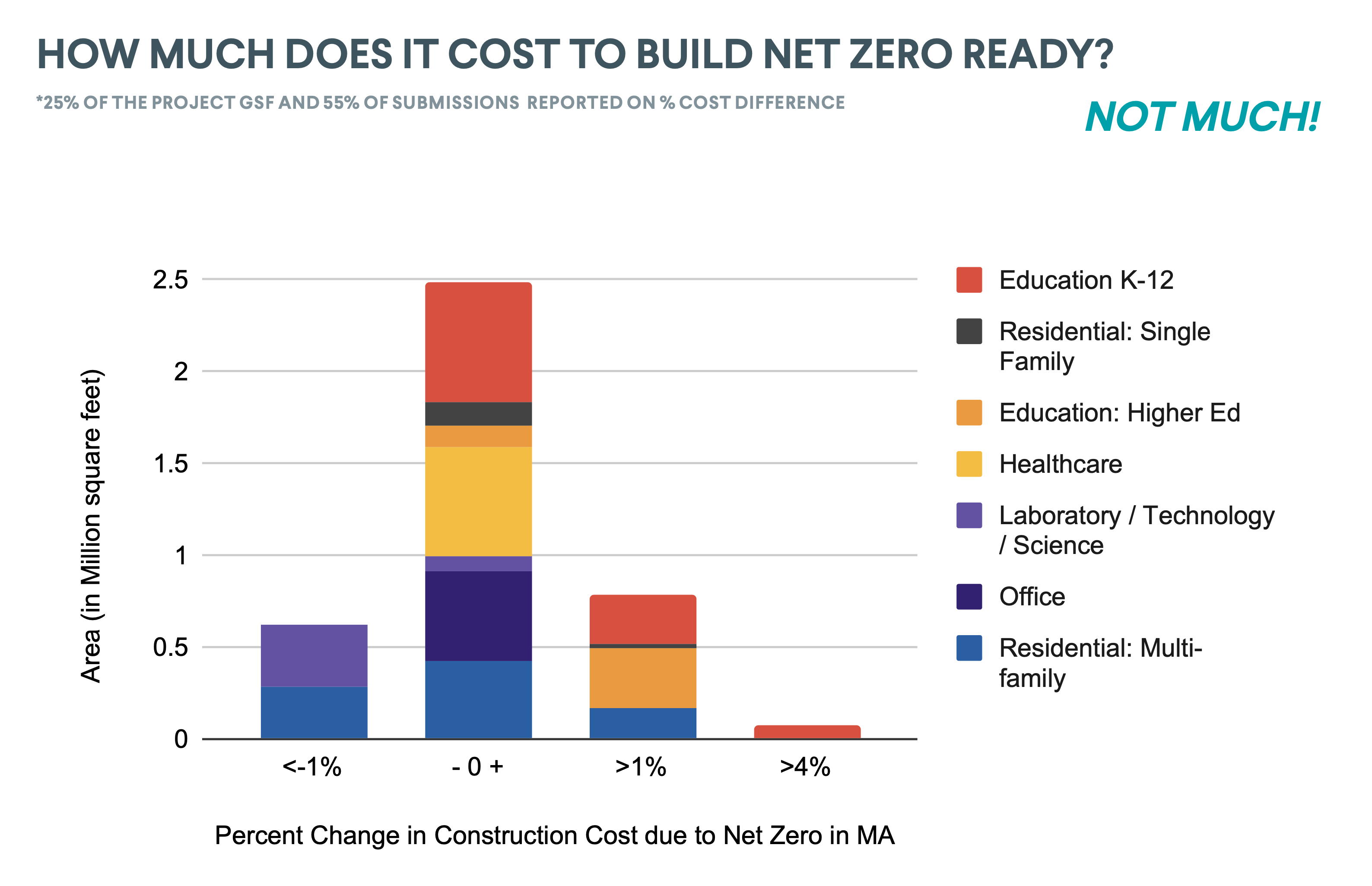Rebates

Residential: For residential buildings, large incentives are available for all-electric construction with low HERs ![]() values. (HERs values relate to the stretch code which has already been adopted.) Those achieving a HERs rating of 45 and building all-electric may apply for a $15,000 incentive per single family home. Those achieving HERs 35 with all-electric are eligible for a $25,000 incentive.
values. (HERs values relate to the stretch code which has already been adopted.) Those achieving a HERs rating of 45 and building all-electric may apply for a $15,000 incentive per single family home. Those achieving HERs 35 with all-electric are eligible for a $25,000 incentive.
There are also federal tax credits for Energy Star at $2,500 and Zero Energy Ready for $5,000.
Commercial and multifamily: PACE financing is now available in Massachusetts for new construction of commercial and multifamily buildings. For an all-electric building, 15-25% of the cost of the building may be financed. Solar projects can also be financed.
There is also a $3,000 per unit MassSave incentive for passive house ![]() construction, which is required by the specialized code for buildings over 12,000 sq. ft. 15,000 passive house units have been built in Massachusetts or are under construction.
construction, which is required by the specialized code for buildings over 12,000 sq. ft. 15,000 passive house units have been built in Massachusetts or are under construction.
Appliances: MassSave and Inflation Reduction Act rebates are available for electric powered appliances such as heat pumps and water heaters. MassSave also offers zero percent financing in some cases.
Overall cost
According to the Massachusetts Department of Energy Resources, the cost difference between the stretch and specialized code are as follows:
- In the initial analysis, building all-electric rather than gas amounts to a 1.1% initial cost increase for an office, 0.5% for a school, or 0.5% for a lab.
- However, when you apply the MassSave incentives, those cost increases decline to only 0%, 0.6%, and 0% respectively.
- Also, when you consider the lifecycle cost improvement, the savings amount to +0.7%, +3%, and +8.6% respectively.
The “Massachusetts is Ready for Net Zero” report shows that 81% of Net Zero Ready buildings reported a <1% construction cost premium, based on data from 7 million gross square feet (GSF) of buildings in MA. This includes multi-family and affordable housing. Making the environmental choice does not necessarily reflect a more expensive choice, especially when you consider the lifecycle savings for the owner.
If building with a fossil fuel connection, the specialized code requires inclusion of some solar onsite. However, any ownership, power purchase agreement, or lease model can be used to meet the solar requirements. Therefore, depending on which path is best for the builder or building owner, there may be no upfront cost to the installation of solar, and there would still be savings on electricity over the lifetime of the panels.

Source: Built Environment Plus
Savings to the town

Amy Ritterbusch, CC BY-SA 4.0, via Wikimedia Commons
Hopkinton has been designated a “Green Community” since 2010, as one of the first of 35 municipalities. This has enabled access to grants for energy efficiency and renewable projects. So far Hopkinton has received $1,068,728 in awards including municipal energy efficiency and weatherization upgrades in the schools, DPW, Police Department, Fire Department, and Senior Center.
Recently Massachusetts established the new designation of “Climate Leader.” In order to be eligible to be a Climate Leader, a municipality must adopt the specialized code. Climate Leaders will have access to potential grant funding opportunities starting in June for municipal building electrification and decarbonization, support for on-site solar and storage, support for geothermal for existing buildings and new construction, and other innovative projects. Hopkinton will only have the opportunity to participate in this competitive grant program if we adopt the specialized code.
Case study: Elmwood School replacement
The Elmwood School replacement project has been working with a design firm to plan for a construction project that most cost-effectively meets the needs for a new elementary school. The committee faced many challenging decisions, but one major one was the HVAC system. Among the choices were a gas heating system (similar to to the one at Marathon School), air source heat pumps, and ground source heat pumps (GSHP). When weighing the decisions for comfort of the students, operational costs, and maintenance, the committee ultimately chose to pursue the ground source heat pump system.
Not only would GSHPs provide a comfortable learning environment for the students from the cold days through the hot days, but it was the best financial choice. The GSHP is the lowest cost to operate because of its very high efficiency. Additionally, when solar is added to the school, the electrical cost will be eliminated or significantly reduced, an objective that can’t be reached with gas power. Though the GSHP has a high up front cost due to the digging of many wells, the cost is offset by substantial state and federal rebates. And due to the efficient all-electric power, it was the most environmentally favorable option. Given all of the data, electric heat pumps were the clear winner.
$1.7 Million Rebate
From MassSave

$4 Million Rebate
From the Inflation Reduction Act
Once the committee decided on the HVAC system, it was an easy (and cost-effective) decision to make the whole building all-electric. The Elmwood School replacement will be fully compliant with the specialized code, even though it will be started before the new building code would take effect in Hopkinton. The school will be LEED V4.1 ![]() certified and net zero ready, enabling it to begin fully carbon neutral operations once solar is installed.
certified and net zero ready, enabling it to begin fully carbon neutral operations once solar is installed.


